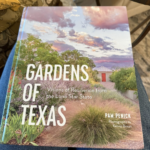Picture this: You’re visiting Venice’s beautiful islands and want to ask when the next…
Picture this: You’re visiting Venice’s beautiful islands and want to ask when the next vaporetto (water bus) will arrive. Or you’re trying to book a table for 8 p.m. at one of the famous seaside restaurants in Capri. In both cases, telling time in Italian is a skill you can’t miss if you want to have a smooth conversation.
This guide will walk you through everything you need to know about words for telling time in Italian. From how to say the hours and minutes to common time-related expressions like mezzogiorno (noon) and e mezza (half past), you’ll be a time-telling whiz within the ora (hour). And if you combine all this with the days of the week and months in Italian, you’ll be well on your way to mastering everyday interactions as you learn Italian step by step.
Table of Contents
How to ask ‘What time is it?’ in Italian
There are two interchangeable ways to ask for the time in Italian that work at any time of day. Be aware that Italian considers any hour except one o’clock to be a plural hour.
- Che ora è? = What time is it? (singular)
- Che ore sono? = What time is it? (plural )
Additionally, if you want to ask about the current time in Italy to someone nearby or a passerby, you can also use this expression which is not translatable in English.
- Hai/ha l’ora? = Do you know what time it is? (informal/formal, literally: Do you have the time?)
Asking the time of specific events is a little different, and you must say a che ora (at what time) instead.
- A che ora parte il treno? = At what time does the train depart?
- A che ora sei andata al lavoro? = At what time did you go to work?
Besides these common sentences, you’ll also hear variations, like using the verb dire (to tell) or sapere (to know). And, of course, you can make them more formal or informal, depending on who you’re speaking to.
| Italian | English |
| Hai mica l’ora? | Do you know the time, by any chance? (informal Italian slang) |
| Mi scusi, sa l’ora? | Excuse me, do you know the time? (formal) |
| Può dirmi l’ora, per cortesia? | Can you tell me the time, please? (formal) |
| Puoi dirmi l’ora, per favore? | Can you tell me the time, please? (informal) |
| Scusa, hai l’ora? | Excuse me, do you know the time? (informal, literally: Do you have the time?) |
| Scusa, sai l’ora? | Excuse me, do you know the time? (informal) |
| Scusi, ha l’ora? | Excuse me, do you know the time? (formal) |
How to tell time in Italian
Now, let’s learn how to answer all those questions in the chart. Telling time in Italian is quite straightforward since it works similarly to English in many ways. You just need to build a small vocabulary of Italian words related to time and understand some differences between the two languages.
Telling the hour in Italian
Telling the time as “o’clock” is the first step and the foundation for all other time expressions. In English, you use:
- to be + hour + o’clock
- It is two o’clock.
In Italian, the structure is similar but not identical.
- essere (to be) + definite article + hour
- Sono le due. = It’s two o’clock.
The important difference is that Italian grammar treats most hours as plural, so the verb and the article must change accordingly. They are singular for one o’clock and plural for the other hours.
- È l’una del pomeriggio. (s) = It is one p.m.
- Sono le otto di mattina. (pl) = It is eight a.m.
The chart below shows how easy it is to say when the time you want to tell is on the hour.
| Italian Morning Hours | English |
| È l’una. | It’s one o’clock. |
| Sono le due. | It’s two o’clock. |
| Sono le tre. | It’s three o’clock. |
| Sono le quattro. | It’s four o’clock. |
| Sono le cinque. | It’s five o’clock. |
| Sono le sei. | It’s six o’clock. |
| Sono le sette. | It’s seven o’clock. |
| Sono le otto. | It’s eight o’clock. |
| Sono le nove. | It’s nine o’clock. |
| Sono le dieci. | It’s ten o’clock. |
| Sono le undici. | It’s eleven o’clock. |
| Sono le dodici. | It’s twelve o’clock. |
Noon and midnight in Italian
Italians also use common time expressions like “noon” and “midnight.” In this case, the verb is always in the third singular person, and you can skip the article.
- mezzogiorno = noon
- Finalmente è mezzogiorno: pranziamo! = It is finally noon; let’s have lunch!
- mezzanotte = midnight
- È troppo tardi: è già mezzanotte. = It’s too late: It’s already midnight.
Adding minutes to the hour
There are two ways to include minutes when telling time, and both are widely used in everyday conversation.
The most common way is to say the hour first, followed by e (and) + the minutes. This works for between 1 and 59 minutes past the hour, so make sure to learn Italian numbers, too.
- Sono le otto e venticinque. = It is eight twenty-five p.m.
- Sono le due e quarantadue. = It is two forty-two p.m.
When the time goes beyond half an hour, you can say the minutes left to the upcoming hour using meno (minus) or mancano (are missing to/until):
- Sono le sei meno venti. = It’s twenty to six.
- Mancano cinque minuti alle dieci. = (literally) Five minutes are missing until ten o’clock.
Saying ‘half past’ and ‘quarter to’
When time fractions are precise to quarters or half hours, telling time is even easier because you can use invariable expressions with e (and) or meno (minus).
- È l’una e un quarto. = It is a quarter past one.
- Sono le otto e mezza. = It is half past eight.
- Sono le sei meno un quarto. = It is a quarter to six.
How to use a.m. and p.m. in Italian
Italians don’t use a.m. and p.m. the same way English speakers do. If the context makes it clear whether you’re talking about morning or afternoon, you can say the time without any extra words.
However, if you need to specify the part of the day, add time-of-day expressions like:
- di mattina = in the morning
- Sono le sei di mattina. = It is six o’clock a.m.
- del pomeriggio = in the afternoon
- Sono le tre del pomeriggio. = It is three o’clock p.m.
- di sera = in the evening
- Sono le sette di sera. = It is seven o’clock p.m.
- di notte = in the night
- È l’una di notte. = It is one o’clock a.m.
>> Want to practice your speaking skills in real-time? Join Rosetta Stone’s Italian live lessons.
12-hours vs 24-hour clock in Italy
The official time format in Italy is the 24-hour clock, also called orario militare (military time). Even though Italians use the 12-hour clock in informal conversations, in official contexts, like train schedules, restaurant reservations, or TV programs, you’ll see times written like:
- 13:00 = 1:00 p.m.
- 18:30 = 6:30 p.m.
- 20:00 = 8:00 p.m.
In spoken Italian, people use the 24-hour format in more formal or work-related situations:
- Lo spettacolo inizierà alle ventitré. = The show will start at twenty-three (11 p.m.).
- Il meeting con i clienti è fissato alle quindici. = The meeting with clients is set at fifteen (3 p.m.).
A trick to converting times from the 24-hour format is subtracting 12 from any number over 12. For example, 17:00-12 = 5:00 p.m. Or, you can keep counting from midday till midnight, as shown in the chart below.
| Italian Afternoon/Evening Hours | English |
| Sono le tredici. | It’s 1:00 p.m. |
| Sono le quattordici. | It’s 2:00 p.m. |
| Sono le quindici. | It’s 3:00 p.m. |
| Sono le sedici. | It’s 4:00 p.m. |
| Sono le diciassette. | It’s 5:00 p.m. |
| Sono le diciotto. | It’s 6:00 p.m. |
| Sono le diciannove. | It’s 7:00 p.m. |
| Sono le venti. | It’s 8:00 p.m. |
| Sono le ventuno. | It’s 9:00 p.m. |
| Sono le ventidue. | It’s 10:00 p.m. |
| Sono le ventitré. | It’s 11:00 p.m. |
| Sono le ventiquattro. | It’s midnight. (24:00 or 00:00) |
How to set the time for an appointment in Italian
Once you master telling time in Italian, the next step is learning to talk about something happening at a specific time, for example, when you make a reservation at a spa or nail down an appointment with a new client.
Saying ‘at that time’
In these expressions, the definite article is replaced by the Italian prepositions a and all’/alle (at/at the) followed by the time.
- In Italia, il 31 dicembre a mezzanotte si festeggia l’anno nuovo. = In Italy, on December 31 at midnight, we celebrate the new year.
- Il treno parte all’una e mezza. = The train departs at one thirty p.m.
- La festa inizia alle sette e mezza. = The party begins at seven thirty.
Using ‘around,’ ‘before,’ or ‘after’ a time
Sometimes, you don’t need to be so precise. In casual conversation, you can use approximations to talk about time more flexibly.
- Use verso (around) to say something happens around a certain time:
- Ci vediamo verso le tre. = We’ll see each other around three o’clock.
- Siamo tornati a casa verso mezzanotte. = We came home around midnight.
- Use intorno a (around/about) like verso, if you want to sound more formal or in written language:
- Il film finisce intorno alle undici. = The movie ends around eleven.
- Use poco prima/poco dopo (A little before/a little after) to describe approximate times with an emphasis on being just before or just after the hour:
- Sono arrivato poco prima delle cinque. = I arrived a little before five.
- La lezione è iniziata poco dopo le dieci. = The class began shortly after ten o’clock.
You can also modify these further for more precision.
- Poco prima dell’una e mezza. = A little before half past one.
- Subito dopo le dieci. = Just after ten o’clock.
Frequently asked questions about telling time in Italian
Learning how to tell the time in Italian touches on different aspects of the language and culture. So, while this guide gives you a comprehensive overview of how to ask and tell the time, these quick answers help complete the picture.
How do you say ‘time’ in Italian?
The word “time” isn’t a one-size-fits-all word in Italian. Depending on what you mean, you might say:
- Tempo: the direct translation of “time” works when discussing time in general.
- Amo passare del tempo con le mie amiche. = I enjoy spending time with my friends.
- Da quanto tempo studi italiano? = How long have you been studying Italian?
- Ora: when asking or telling the time.
- Che ora è? = What time is it?
- A che ora arriva il volo? = What time does the flight arrive?
- Volta: when referring to the number of times something happens.
- la prima volta = the first time
- l’ultima volta = the last time
- tutte le volte = every time
- stavolta = this time
What’s the most common way to tell the time in Italian?
Italians typically use the 12-hour clock and time fractions in informal, everyday conversations. For example:
- Sai che ora è? = Do you know what time it is?
- Sono le otto e mezza. = It’s 8:30./It’s half past eight.
In more formal contexts, you can use the 24-hour clock and give the exact minutes to sound more polished:
- Sono le otto e trenta. = It’s 8:30.
- Sono le venti e trenta. = It’s 8:30 p.m. (thirty past twenty)
How do you say ‘morning,’ ‘afternoon,’ ‘evening,’ and ‘night’ in Italian?
Italians divide the day into four parts:
- la mattina or il mattino = morning
- il pomeriggio = afternoon
- la sera = evening
- la notte = night
Plus, there are two specific moments of the day:
- mezzogiorno = noon
- mezzanotte = midnight
These terms aren’t just useful for telling time. They also shape everyday greetings and expressions, helping you tell when to say “good morning” or “have a good day” in Italian.
How do you say ‘o’clock’ in Italian?
There is no Italian equivalent to the expression “o’clock.” When the time is on the hour, you don’t need to specify it in Italian. You can simply say
- Sono le cinque. = It’s five (o’clock).
However, if you want to highlight that the time is precise, you can say in punto or spaccate, which is like saying “sharp” when telling the time.
- Sono le otto in punto. = It’s exactly eight o’clock.
- Ti aspetto alle 5:30 in punto. Non fare tardi. = I expect you at 5:30 sharp. Don’t be late.
- Sono le quattro spaccate. = It’s exactly four o’clock.
You’ve got the time down in Italian—nice work! Now, let’s make it stick. Say it out loud or tell a friend when your favorite show starts, when dinner’s ready, or when you’re hopping on a plane to Italy (manifesting it hardly). The more you play with it, the more natural your Italian conversations flow.
Recommended Story For You :

Online language courses designed by language lovers crafted for you.

Fun Online Spanish Group Classes

Unlock the Power of Synergy Spanish

Practical Hebrew- as a proven way to understand and speak Hebrew as quickly as possible.

English Made Easy: Practice Your Way to Fluency with Confidence and Fun

Listen and Speak English






